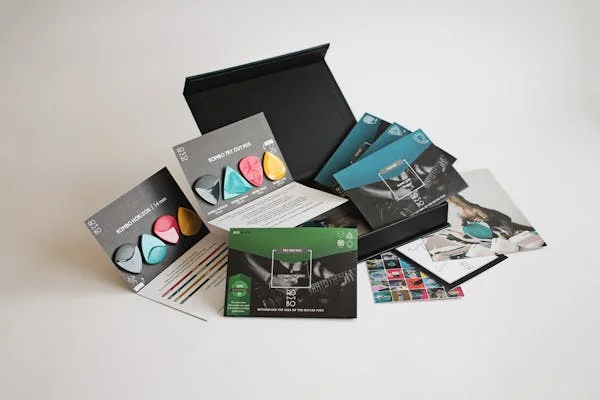Marketing materials are crucial to any business as they establish the brand identity and attract clients. However, it may get pretty expensive for businesses to afford quality brochures, flyers, and business cards if their designing is not planned appropriately. Luckily, businesses can produce professional marketing materials while still keeping within a budget by leveraging smart strategies and appropriate resources.
Choosing the Right Software
First things first, the process of creating marketing materials should start with the selection of appropriate design software. Though Adobe Illustrator and InDesign are among the most popular premium programs, their cost is very high. Alternatively, free or low-cost solutions include Canva, GIMP, and Affinity Designer. These programs come with powerful design features, templates, and personalization options that make it possible for a business to create great visuals even without professional design experience.
High-Quality Printing
Not even the best-designed marketing materials can escape the poor appearance that comes with bad printing. Of course, the businesses should aim for high-quality printing without the extra cost. Many local print shops and some online printing services offer competitive prices, especially if the order is in bulk. Comparison shopping, sample print reviews, and ensuring a service can offer additional features such as glossy or matte finishes to the material are also important. Besides that, laminating film on materials that are handled often, like menus or instructional handouts, can make them more durable and professional-looking without excessive costs.
Choose the Right Paper
Paper quality goes a long way toward the perceived quality of your marketing materials. Try to avoid the cheapest, thinnest flimsy stocks that can make even the best design look poorly printed. When possible print on a somewhat thicker stock-100 lb. text paper will work for most flyers, or 14 pt. cardstock for business cards. Most inexpensive print providers will offer upgrades at a relatively minor additional cost to give your material a much greater perceived value.
Keeping Designs Clean and Readable
A good design doesn’t involve how much information one can fit on a flyer, but rather how well the message is communicated. Keeping layouts clean and uncluttered helps potential customers easily absorb key information. Using two or three complementary colors, selecting professional fonts, and ensuring proper spacing can dramatically improve readability. Free design templates can be a great starting point for businesses wanting to create polished materials without hiring a graphic designer.
High-Quality Photos
Visuals play an important part in marketing materials, and the buying of stock photos adds up rather quickly. All businesses can use completely free high-resolution photos from Unsplash, Pexels, and Pixabay. Another option is to take original photos using a smartphone with good lighting and proper composition. This does not just save money but also lets the business create more personalized and authentic branding.
Printing Only What Is Necessary
One of the biggest budget pitfalls when producing marketing material is printing too much of it. In order to avoid such problems of wastage and storage, businesses should look at their needs and print accordingly. Complementing physical copies, digital versions can be distributed as PDFs or even used as graphics on social media. Further, print-on-demand services allow for flexibility without committing to large print runs. Regularly reviewing and updating marketing materials also helps prevent outdated prints from going to waste, ensuring that only relevant and effective content is in circulation.
Leveraging Free and Low-Cost Design Resources
There are many free or low-cost design resources online that include icons, backgrounds, and typography. Websites like Freepik, Font Squirrel, and DaFont offer high-quality design elements that can enhance marketing materials at no cost. Using these resources ensures that materials maintain a professional appearance without the expense of hiring a designer or purchasing costly design packages. Many of these platforms also provide customizable templates, allowing businesses to create polished designs quickly and efficiently.
Testing and Proofreading to Avoid Costly Errors
The simplest way to maintain an overall budget-friendly approach in operation is checking the design before printing. Minor mistakes spelling, contact details, and alignment can result in a considerable amount of reprints and wasted expenses. Every business should always print a test copy or request proof from a printer prior to entering a full run. By having other sets of eyes reviewing the design, too, mistakes can be caught with a much more professional end-product.
Professional-looking marketing materials can be created without breaking the bank. By choosing free or more budget-friendly design software, using nice paper and printing, leveraging free resources, and focusing on clean, effective designs, businesses of any size can create impressive marketing pieces without breaking the bank. Thoughtful planning and smart decision-making will ensure that every dollar spent contributes to an impactful and polished final product.





